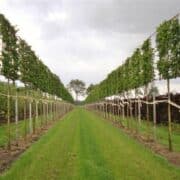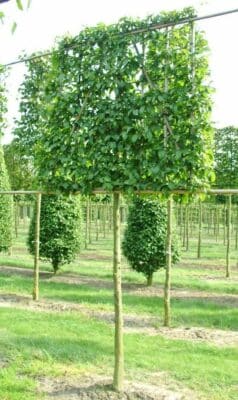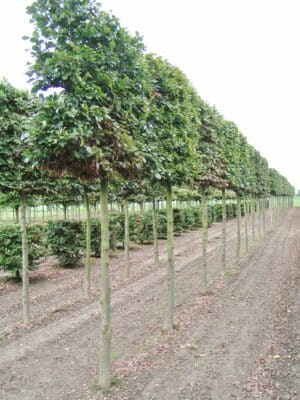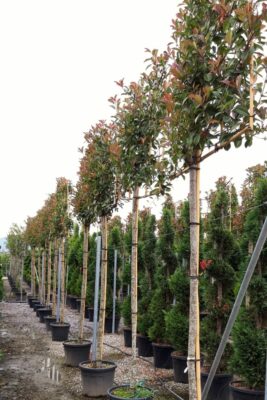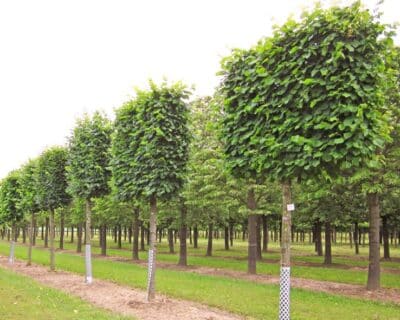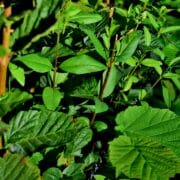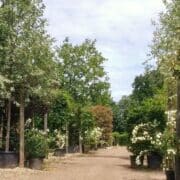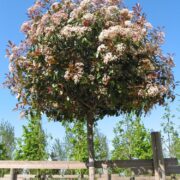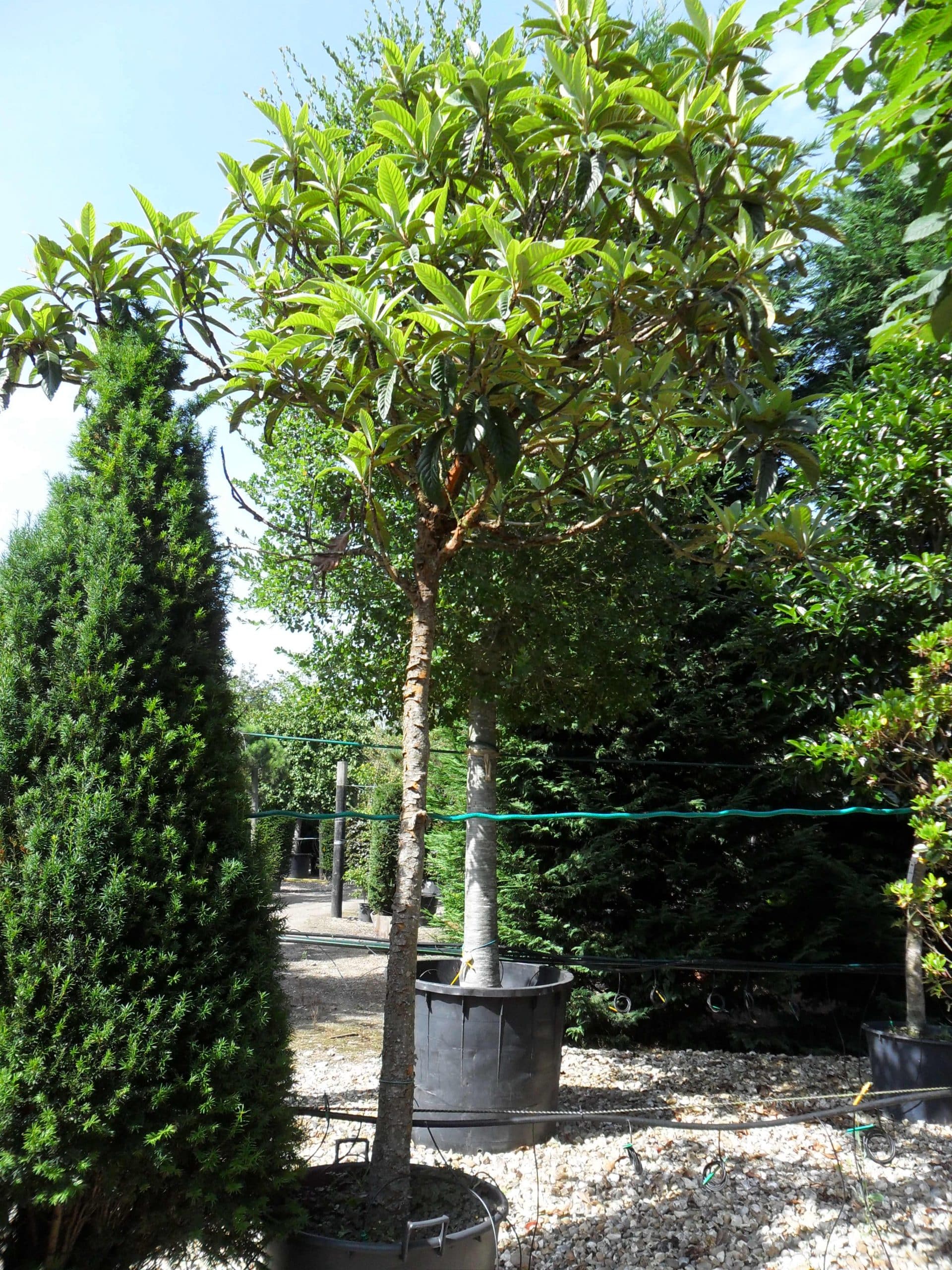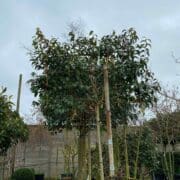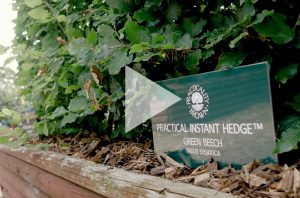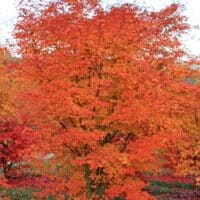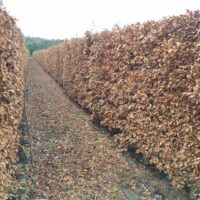Pleached Trees
If your garden needs effective screening or simply to improve privacy without reducing the living space then a pleached tree may well be the answer.
Please see our top five suggestions below, which make attractive Pleached Trees.
- Prunus laurocerasus (Cherry Laurel)
- Photinia fraseri Red Robin
- Carpinus betulus (Hornbeam)
- Fagus sylvatica (Beech)
- Tilia platyphyllos (Broad-leaved Lime)
Trees have been trained into formal architectural shapes for many centuries, and the use of pleached trees to in the garden is one of the defining aspects of 17th and 18th-century design; particularly in France and Italy where they were traditionally used to demarcate grand allées or to create privacy.
Sometimes known as “hedges on stilts” pleached trees are shaped by using a square frame; tying-in and interlacing flexible young shoots along a supporting framework, creating a narrow, slim canopy. Espalier trees is the term used for pleached fruit trees, designed so that sun can shine on the fruit, making it easier to harvest.
We can supply these trees across many species, both as evergreen and deciduous. They are available with clear stems between 1.5m to 2m high and on square frames of 1.5m x 1.5m or 1.8m x 1.8m.
This is a popular tree, with an upright and bushy habit which is perfect year-round screening in its pleached form. Its large leaves are elliptical, shiny and bright green and have small, sweet-smelling, white flowers, which grow in vertical racemes, followed by small, cherry-like fruit.
Photinia fraseri Red Robin is a versatile evergreen, and it’s stand out feature is the vibrant red new shoots in spring, which contrast with the white blossom – unusual in an evergreen. The bright new leaves change to a deep, glossy green as they mature. The RHS has given this tree an Award of Merit.
Carpinus betulus is a British native deciduous tree which is popular for as a pleached tree, due to it’s ability to regenerate after pruning and its seasonal variation. The leaves are a fresh green colour in spring and turn golden yellow in the autumn. Hornbeam is hardy and can be planted in sun or shade and in all soil types.
Fagus sylvatica is a popular native deciduous tree which is ideal for pleaching due to retaining its leaves throughout the winter months. The leaves emerge fresh green, turning a splendid yellow-orange in the autumn. Beech prefers nutritious, well drained soils, and can be planted in sun or shade.
Tilia platyphyllos is a fast growing lime tree which has luscious heart-shaped foliage which gives the tree a healthy appearance all year round; the leaves turn a lime yellow autumn. This tough tree responds well to regular pruning. It will tolerate most soil types, including clay soils
Contact to us about your requirements for screening or privacy in your garden; we can supply and plant many types of attractive trees in both evergreen and deciduous species.
- Carpinus betulus
- Fagus sylvatica
- Photinia fraseri Red Robin
- Prunus laurocerasus Novita
- Tilia platyphyllos

